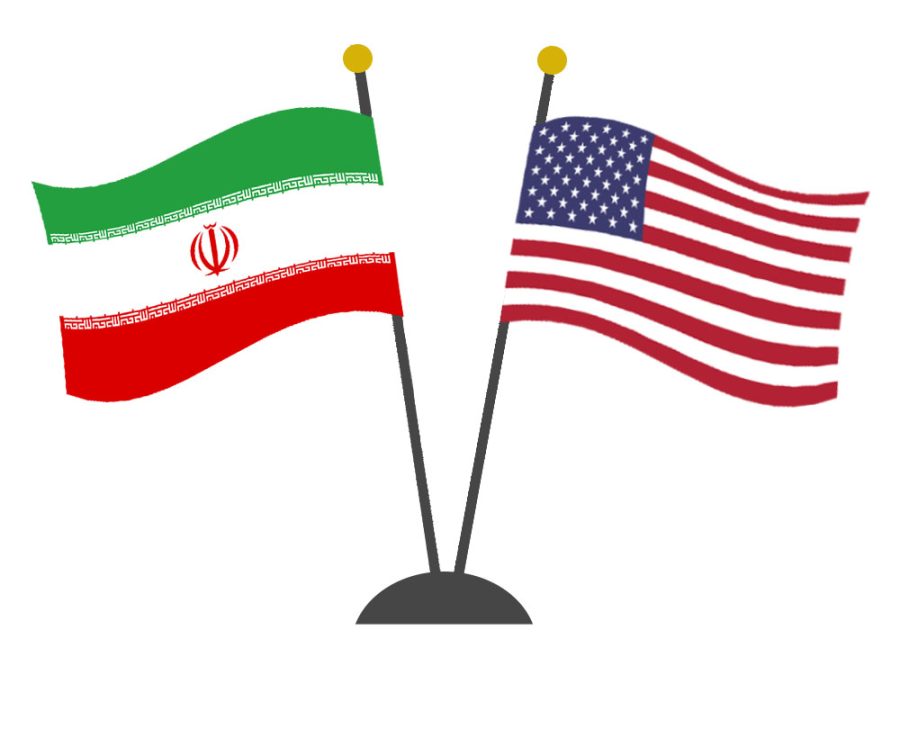Drone strike increases U.S. and Iran tensions
On Jan. 3, 50 years of conflicts between the U.S. and Iran came to a head.
January 29, 2020
On Jan. 3, 50 years of conflicts between the U.S. and Iran came to a head: a U.S.-ordered drone strike on Baghdad, Iraq resulted in the death of Iranian General Qasem Soleimani.
Sources confirmed that in June 2018, President Trump authorized Soleimani’s killing under the knowledge that Iran would become more hostile towards the U.S. and kill an American contractor. Soleimani was the lead general of the Revolutionary Guards Quds Force, the elite sector of the Iranian military that handles overseas operations, a group carefully watched by U.S. intelligence forces.
“The Pentagon usually gives the president options — they give them conservative, moderate and extreme options for what to do,” said Junior State of America president Stephen Yang. “I would assume that there are a lot of other moderate options to combat Iran’s influence in the Middle East than to assassinate the highest general of the Iranian army, and I would think that you can apply economic sanctions to accomplish these goals. But using force in an attempt to stabilize the situation in the Middle East makes things uncertain of what the future could be.”
The Pentagon, headquarters of the U.S. Department of Defense, blamed Solemani for approving the Dec. 27 rocket base attack that killed U.S. contractor Nawres Hamid and wounded several U.S. forces. The rockets used to kill the contractor were launched by Kataib Hezbollah, an Iranian-backed Shia militia group. The attack that killed Soleimani also killed the leader of Kataib Hezbollah, Abu Mahdi al-Muhandis, an Iraqi military commander in Iran who attacked U.S. and allied forces. On Dec. 29, U.S. planes bombed three sites in Iraq that were tied to Kataib Hezbollah, including weapon storage sites.
In 2015, during the Obama administration, Iran and six other major powers including the U.S. signed the Joint Comprehensive Plan of Action (JCPOA), more commonly known as the Iran nuclear deal. This restrained Iran’s development of nuclear technology and its production of uranium. The JCPOA required Iran to reduce the number of operational centrifuges — devices used to make enriched uranium, an element necessary for the production of nuclear weapons and reactors.
On May 8, 2018, the U.S. withdrew from the Iran nuclear deal, resulting in Iran taking action to enrich their uranium to weapons grade. A year later, Iran followed through with the threat of surpassing the limit set by the nuclear deal.
“A nuclear agreement is like Pandora’s box,” said World History and AP U.S. History teacher Steven Roy. “Any state with the time, resources and money can achieve it. It’s a matter of whether or not the benefits of the development outweigh the risks and potential for blowback.”
On Aug. 7, 2019, the U.S. reimposed the first round of sanctions on Iran, which were originally lifted as part of the JCPOA. As a result, Iran’s economy suffered major losses, and the Iraninan currency lost some of its power. Three months later, the U.S. announced a new round of sanctions targeting Iran’s oil and banking sectors.
Following the Jan. 3 attack, on Jan. 5, Iran stated that it would no longer obey the nuclear deal and intends to expel all U.S. troops. Trump promised that if the Iranian military tried to remove any forces, he would impose sanctions.
On Jan. 8, Iran launched a counter strike against the U.S., launching 16 missiles at two military bases in Iraq. This attack injured 11 U.S. soldiers, but there were no casualties. The same day, Iran shot down Ukraine International Airlines Flight 752, killing 176 passengers. Iran acknowledged responsibility for the attack, stating that the accident was due to “human error.”
Iran announced it would pull out of the global nuclear Non-Proliferation Treaty (NPT) two weeks later, on Jan. 22. Since 1968, the NPT has been the foundation of global nuclear arms control. Amid these tensions, Iran also declared that it would pull out of World Economic Forum. Britain, Germany and France triggered the agreement’s dispute resolution mechanism, which allowed the U.N. to reimpose its sanctions.
On Jan. 23, the U.S. Treasury Department blacklisted four companies from Hong Kong, Shanghai and Dubai who supported Iran’s petroleum sector. These companies had sold products to Iran’s state-owned oil company and continued to do so after the U.S. had imposed sanctions on Iran’s economy. The tight restrictions have been imposed in an effort to pressure Iran into accepting greater restraints on nuclear development, regional activities and the pursuit of ballistic missiles.
Recently, major European powers have officially called on Iran to slow its nuclear expansion before it develops enough technology for a full weapon. The delay would ideally buy time between the U.S. and Iran to reach a new nuclear agreement.
Though tensions from the drone strike have not abated, the public now waits and watches with hope that relations between the two world powers will ease.




































































